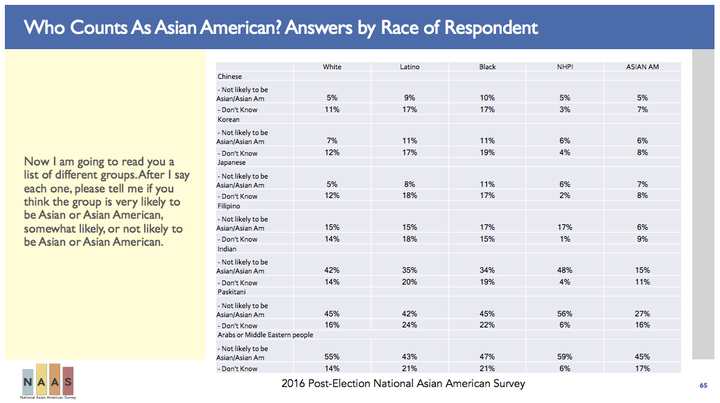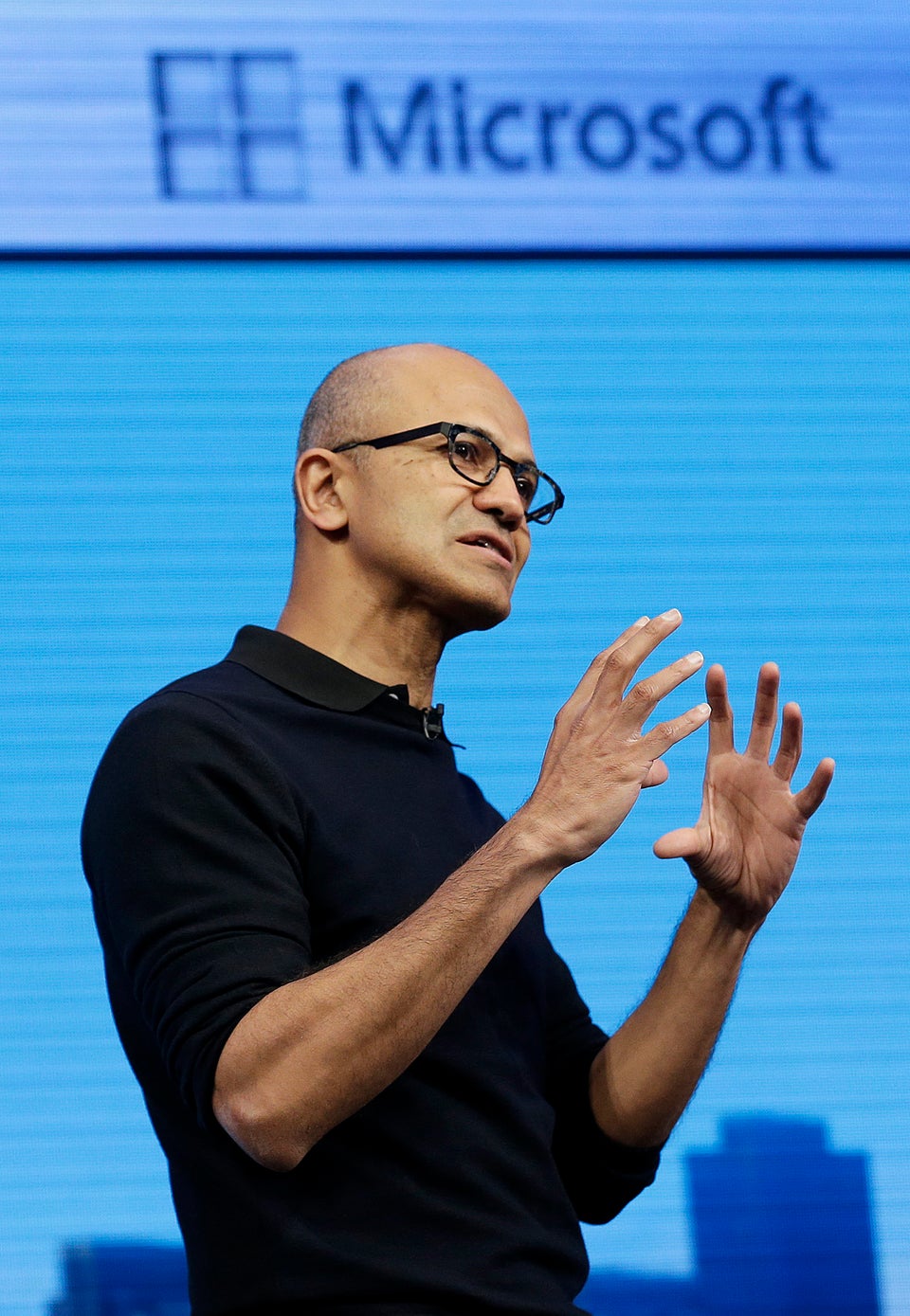
Americans may have dedicated the month of May to the history, culture and accomplishments of Asian-Americans and Pacific Islanders for 25 years. But new research shows many people still don’t know who exactly can be considered Asian.
That includes Asians themselves.
The National Asian American Survey collected data in 2016 that found many people are confused about which ethnic groups fall under the category of Asian. And the research reveals that people tend to separate different Asian groups, which could be detrimental to America’s understanding of the Asian experience.
“When we perceive only some ethnic groups as Asian-American and exclude others, we see and hear only selective narratives,” wrote NAAS researchers Jennifer Lee and Karthick Ramakrishnan in an opinion piece for NBC Asian America Tuesday. “This selectivity affects our understanding of anti-Asian prejudice and discrimination.”
The new data was included in a larger study published this week, titled the 2016 Post-Election National Asian American Survey.
During their research, NAAS set out to answer the following question: According to the general public, who counts as an Asian or Asian-American person?
To answer this question, researchers surveyed participants after the election. They first read to the participants a list of different ethnic groups, which included Chinese, Korean, Japanese, Indian, Filipino, Pakistani and Arab or Middle Eastern people. Then they asked them: “Tell me if you think the group is very likely to be Asian or Asian American, somewhat likely, or not likely to be Asian or Asian.”

Some of the survey’s results were just as researchers expected. Most people ― whether they were white, black, Latino or Asian ― agreed that Chinese, Japanese and Korean people are likely to be Asian.
However, the people surveyed were less sure if South Asians and Middle Eastern people could be considered Asian.
“The question of Asian-American identity is contested, with South Asian groups (Indians and Pakistanis) finding it more challenging for American society to view them as Asian American,” researchers wrote in the key findings section of their report.
At 34 and 35 percent respectively, black and Latino participants were more likely than white participants to consider Indians as Asian, while 42 percent of white people reported that Indians probably don’t count as Asian. There were also higher percentages of people across all ethnic groups who considered that Pakistanis and Arabs were not likely to be Asians.
But the figure researchers found most surprising is how other Asian groups considered Indians and Pakistanis: 27 percent of Asian-Americans reported that Pakistani people are likely not Asian, while 15 percent reported that Indians are not likely Asian.
“Most jarring is that other Asian Americans were just as likely to perceive Indians and Pakistanis as not Asian, despite the fact that Indians and Pakistanis see themselves as Asian,” Lee and Ramakrishnan wrote for NBC Asian America.
The perception of Filipinos as Asian fell somewhat in the middle of the data collected in the study, with a higher percentage of all ethnic groups except for Asian-Americans reporting that Filipinos are less likely to be Asian, when compared to the results from Chinese, Korean and Japanese people.
While these results aren’t definitive ― they represent people’s opinions on who can and can’t be considered Asian ― NAAS researchers say they reveal how selective people can be with different Asian groups. Americans appear to draw boundaries between East Asians (Chinese, Korean and Japanese), South Asians (Indians, Pakistanis and Bangladeshi) and, to some extent, Southeast Asians (which includes Filipinos).
And these perceived boundaries could affect how we see and ignore different types of anti-Asian discrimination, according to the researchers.
All Asian groups “may all be targets of racist and nativist assumptions, including questions about where are you really from, remarks about our unaccented English, and taunts to ‘Go back to your country!’” Lee and Ramakrishnan explained.
“Both of us can attest to this,” they continued, “but one of us is much more likely to be stopped for random security checks at airports, detained as we re-enter the country, perceived as a terrorist, and be the victim of hate crimes.”

